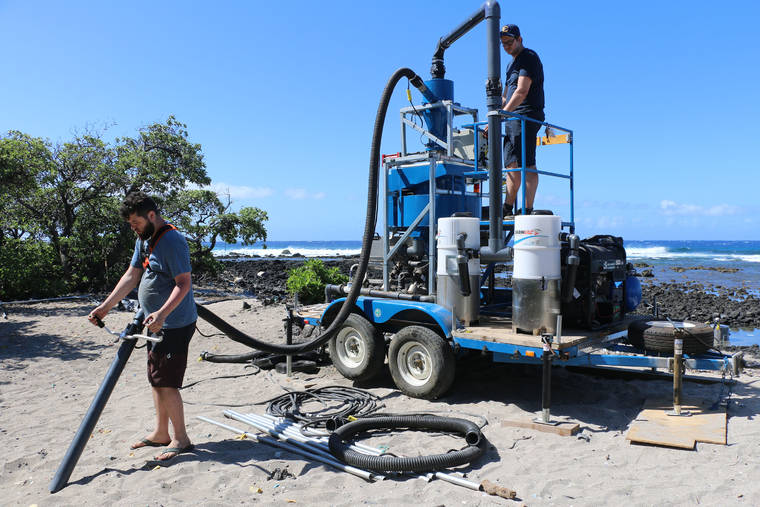
Image: West Hawaii Today
Hoola One, a machine developed by mechanical engineering students at the Université de Sherbrooke, is being used to clean up one of Hawaii’s dirtiest beaches by filtering out microplastics. As Atlas Obscura explained, Kamilo Beach was formerly a lovely white sand beach stretch which is now a trap for countless tons of trash. Nicknamed “Trash Beach,” or “Plastic Beach,” due to garbage and marine debris from the Great Pacific Garbage Patch collecting in astounding proportions, clean up of this coastal area is desperately needed.
How It Works: As McGill Media explained, Hoola One has an extended hose that is operated manually. Similar to your usual vacuum cleaner, this machine, too, sucks up the plastic mixed sand and dumps it inside a huge tank containing water. Because the rock and sand particles are heavier than plastic they sink to the base of the tank while the plastic floats on top of the water surface.
What To Do About Dirty Beaches: Since 2003, more than 268 tons of marine debris have been removed from this section of the island by the Hawai’i Wildlife Fund. Kamilo Point is not an isolated incident, as beaches everywhere and becoming increasingly polluted by our plastic waste. For instance, the Cocos (Keeling) Islands off of the coast of Western Australia are home to an estimated 414 million pieces of trash – a quarter being single-use plastic items. While beach cleanups are important and can make a difference, we desperately need better technology to allow us to prevent our trash from entering the oceans and also for us to be able to clean up what’s already there.
Microplastics, Everywhere: Since the 1950s when the production of plastic began, 9.2 billion tons have been manufactured, with 6.9 billion tons turning into waste, of which a staggering 6.3 billion tons have failed to be recycled. For many years we couldn’t figure out where our plastic waste was going but it was discovered that the ‘missing’ plastic was getting broken down into microplastics. On Hawaii’s Big Island beaches, it is estimated that around 15 percent of the sand is actually microplastics. A team from the University of Hawai’i Hilo will compare how much microplastic is in the sand before and after filtration to hopefully get a better understanding of just how pervasive the microplastic problem truly is.
Ecological Impact: For turtle hatchlings, whose sex depends on the temperature of eggs during incubation, more and more males are being born as microplastics are preventing heat from reaching the deeper layers of the beach. While the full extent of microplastic’s impact on our oceans and beaches is yet to be discovered, we are already beginning to see changes within ecosystems that come into contact with them.
Why This Matters: Unlike climate change, there are no ‘ocean pollution’ denialists. The evidence and imagery are too staggering to deny, the science too obvious. However, despite the international consensus that this is an issue, global efforts to confront this challenge have been lackluster at best. In fact, this year the United States weakened the first global commitment to reduce single-use plastics. The United States must step up on a federal level to tackle the plastic waste crisis and then be in a position to help other nations do this as well.
July 9, 2019 » beaches, Hawaii, microplastic, Ocean Plastic, plastic


